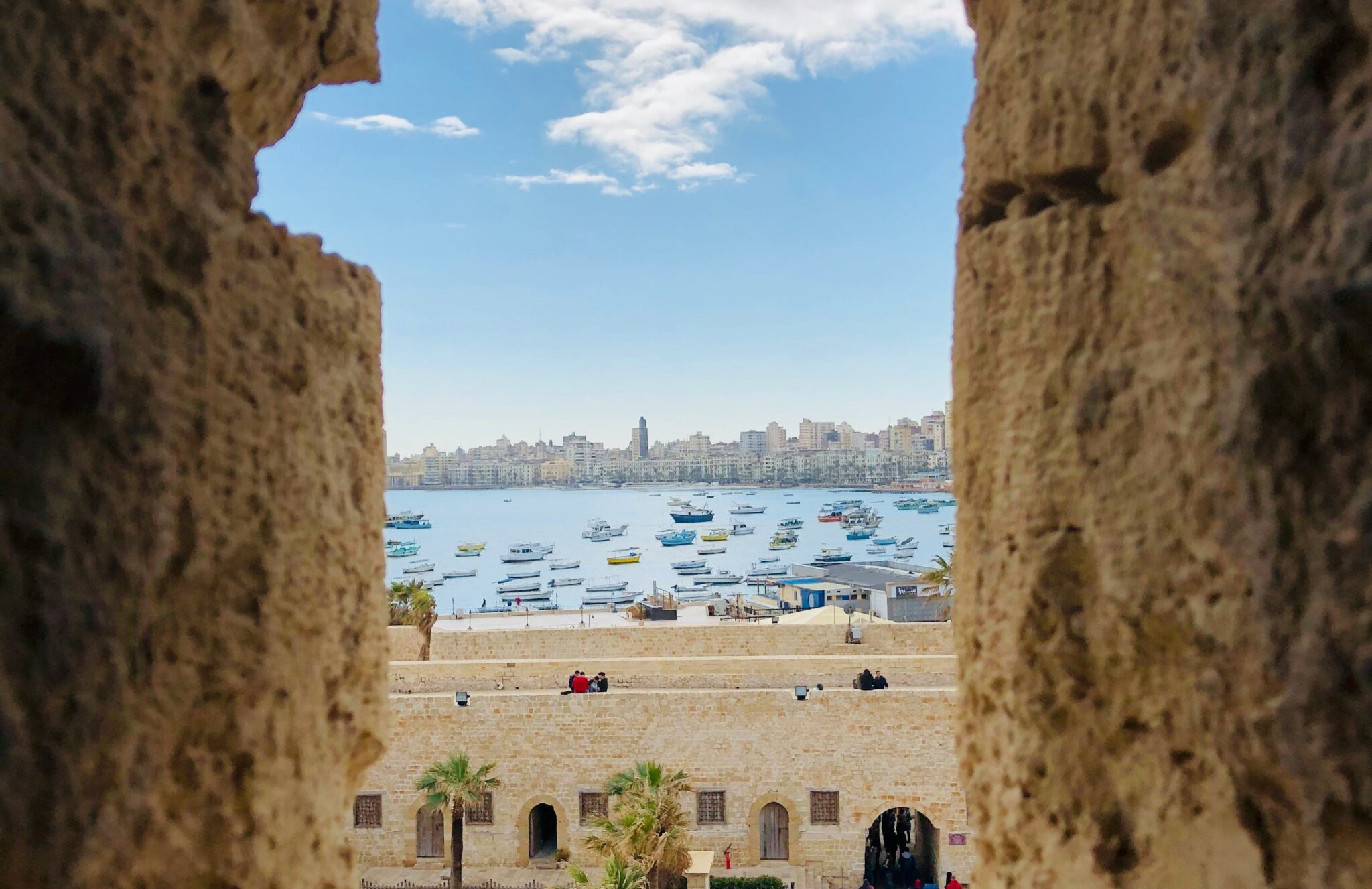<em>Alexandria: The City that Changed the World</em>
Islam Issa
Sceptre, £30, 496 pages
In 331 BC, on the north coast of Egypt, an extraordinarily talented and hubristic young man ordered the construction of a new city. The location was well chosen: between the open sea of the Mediterranean and the freshwater lake Mereotis; a coastal island providing shelter for a future harbour; close to the fertile Nile Delta, but a sufficient distance to avoid its regular flooding.
The location was also mythical, associated with a legendary visit by Helen of Troy. No doubt this was appreciated by the Greek colonists who would settle there, augmenting and soon outstripping the extant native Egyptian fishing village. The young man was Alexander III of Macedon, known to us as Alexander the Great. And, displaying the characteristic modesty of an all-conquering hero, the new city was to be Alexandria.
In <em>Alexandria: The City that Changed the World</em>, Islam Issa paints with bold, broad brushstrokes a picture of that famous Mediterranean cosmopolis, giving a stimulating long durée outline history of Alexandria and its inhabitants. His style is episodic, having a keen eye for crucial events and attention-grabbing anecdotes.
His account of Ptolemy (later known as Sōtēr, the “Saviour”), the Macedonian general who cannily installed himself as ruler of Egypt upon Alexander’s premature death, begins with the audacious diversion of Alexander’s funeral cortege to Egypt. Instead of returning to Macedon to lie in the royal family’s tombs, Ptolemy made sure that Alexander’s mortal remains would instead rest in his new Egyptian capital.
Indeed, Issa gives us a good sense of Ptolemy as Alexandria’s second founder. His descendants, right down to Cleopatra VII, reigned in Egypt as a Macedonian dynasty of Greek-speaking Pharaohs. Alexandria may have been the great conqueror’s inadvertent resting place, but it was Ptolemy’s power-base, entrepôt and playground.
Alexandria’s cultural resonances are well known. Issa naturally treats his reader to a whistle-stop tour of the Great Library. He is quick to acknowledge that the library, like the city, was cosmopolitan rather than autochthonous. Issa’s account of the Library begins overseas in Greece, with the philosopher turned statesman turned pariah Demetrius of Phaleron, another pupil of Alexander’s old tutor Aristotle. Demetrius is presented as a failed and controversial quisling politician at Athens, whose political disgrace is channelled into a love of Homer. This erudite exile finds a new home in Ptolemy’s Alexandria, where he volunteers as a kind of legal consultant and cultural guru to the ambitious and arriviste king. Demetrius, according to Issa, was charged with overseeing the Library’s birth.
Issa acknowledges that, in fact, the business of actually establishing the Library was left to Ptolemy’s imaginatively named son, Ptolemy II. (There would be, by most counts, 14 Ptolemies, and seven Cleopatras in Egypt). This entertaining blend of myth and history is appropriately Alexandrian. Issa naturally recounts the story told by the Letter of Aristeas, which details how Ptolemy II procured 72 (or 70) elders from the High Priest Eleazar at Jerusalem, to translate the Hebrew Scriptures into Greek for his universal library. Miraculously, so the legend goes, the translators – working independently – each produced an identical Greek version of the Mosaic Torah. Less supernaturally, but no less momentously, this tradition represents the entry of Jewish literature and religion into the Greek Mediterranean world. The consequences would be beyond the imagination of anyone in ancient Alexandria.
Issa pays close attention to the history of the Jewish community living in Egypt’s Greek capital city. He notes, for example, that the Ptolemies were fairly tolerant of their Alexandrian Israelites; their Roman successors could be rather harsher. The Jewish and pagan communities of Alexandria proved fertile ground for the Gospel in the days of its earliest preaching, and Issa is quick to introduce the missionary work of St Mark the Evangelist with the traditional tale of his healing the injured Alexandrian cobbler Anianus.
From here, the reader is carried into the world of early Christianity and beyond: the Roman attempts to coax Alexandrian Christians into offering that proverbial pinch of incense; the Arian controversy, which spilled out into the wider world when the internal doctrinal debates of the Alexandrian church boiled over; the heady mix of neoplatonic speculation, sound Christian doctrine and monastic mob violence that characterised the overlapping worlds of Hypatia and St Cyril. Issa further recounts how the dissensions and dissatisfactions of a divided Christian city led an Alexandrian patriarch to surrender the metropolis to advancing Muslim armies in the seventh century.
The reader of this review does not need a roadmap of all the ground Issa goes on to cover: Saladin, Napoleon, the Second World War and General Nasser all make their appearances. Issa is sometimes a little impressionistic with his analysis. Two examples which the Catholic reader might easily notice will here suffice. First, he somewhat controversially combines Origen, the famous early Christian theologian, with another philosopher of the same name, an identification by no means certain in scholarship. Second, he speculates that Our Lord might have visited Alexandria as an infant and/or as an adult. His evidence here is threadbare.
Nevertheless, Issa is an excellent storyteller. Through more than 2,000 years of Alexandrian narrative, he weaves little threads of his own Alexandrian experiences. He offers personal reflections on everything from the smells and tastes of Alexandrian cuisine to a poignant reflection on the 2017 suicide bombing of the cathedral. Alexandria’s subject matter is one of the great civilisational stories, and Issa tells it compellingly.
<em>John Ritzema is a biblical scholar and lawyer.</em>
<strong><strong>This article originally appeared in the May 2024 issue of the <em>Catholic Herald</em>. To subscribe to our award-winning, thought-provoking magazine and have independent and high-calibre counter-cultural Catholic journalism delivered to your door anywhere in the world click</strong> <mark style="background-color:rgba(0, 0, 0, 0)" class="has-inline-color has-vivid-cyan-blue-color"><a href="https://catholicherald.co.uk/subscribe/?swcfpc=1">h</a></mark><a href="https://catholicherald.co.uk/subscribe/?swcfpc=1"><mark style="background-color:rgba(0, 0, 0, 0)" class="has-inline-color has-vivid-cyan-blue-color">ere</mark></a>.</strong>



